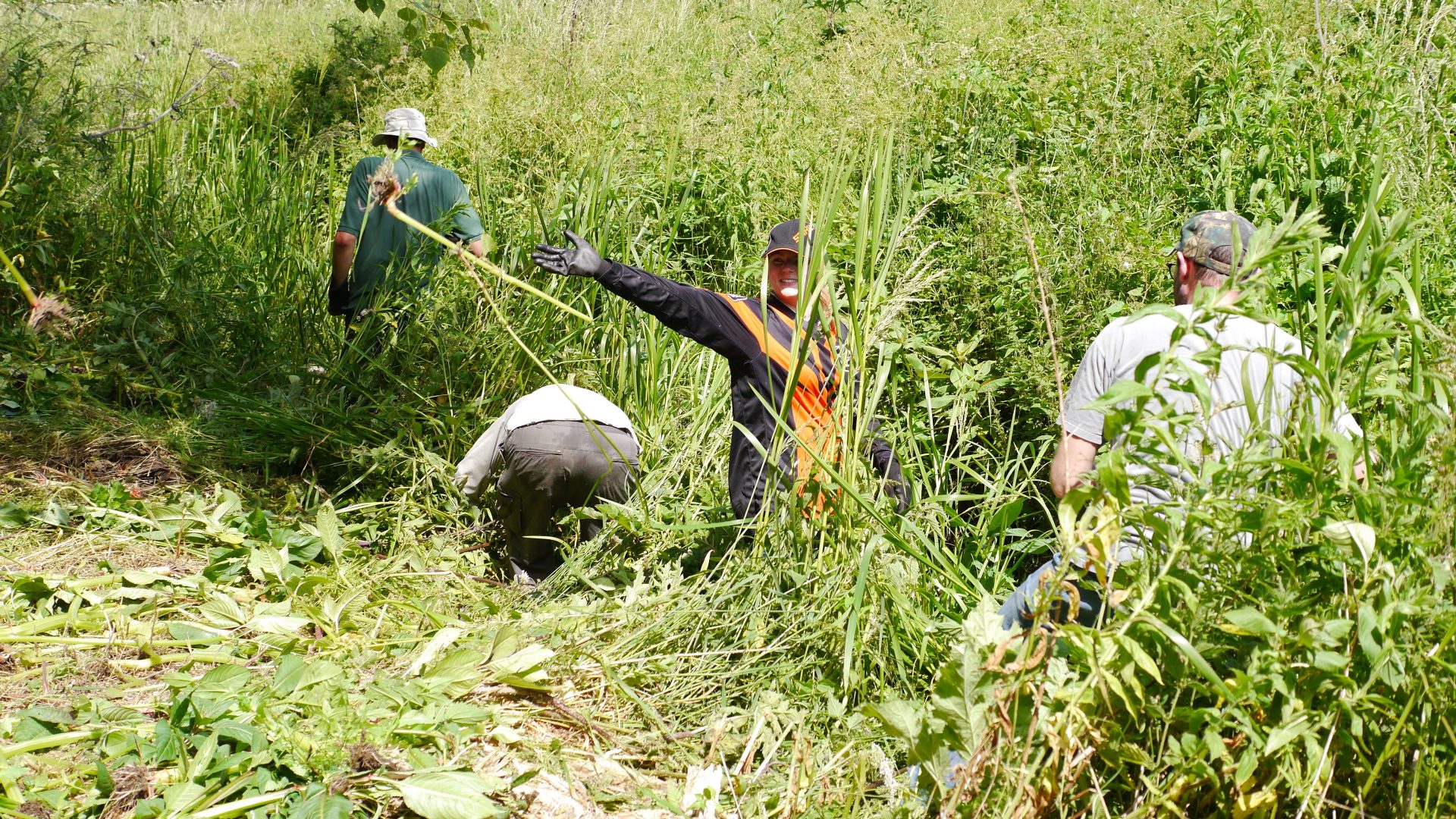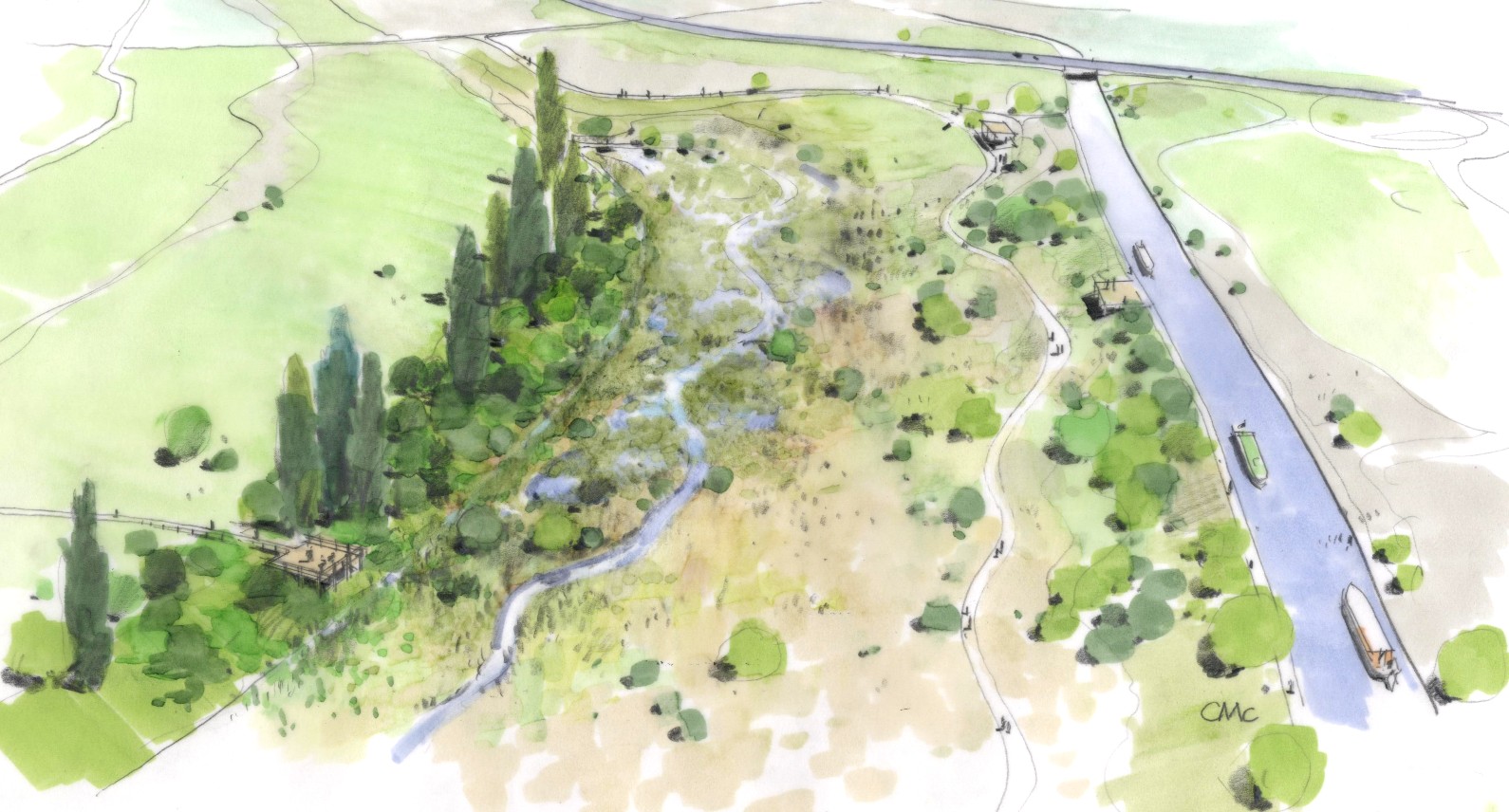A project to develop a unique wetlands centre at the Countess of Chester Country Park has now progressed to detailed design stage following foundational work delivered by Binnies UK.
The new centre, which is anticipated to begin construction in 2025 following this current phase, aims to create a thriving wetlands habitat that also provides recreational space and community access benefits.
This landscape-scale habitat creation initiative aims to improve the water quality of the area and restore a degraded watercourse that runs alongside a historical landfill site. Planned interventions will deliver Water Framework Directive benefits and ensure the healthy status of the water body as it meets and feeds the new wet meadow. Owing to the site’s proximity to the Countess of Chester Hospital, the physical health benefits the site will provide, as well as the environmental impact of the development, are expected to be significant. As part of the initial studies and feasibility work by Binnies UK that have informed the start of the project, a natural capital appraisal was undertaken to identify and value the potential benefit of the project in terms of biodiversity, air quality and carbon sequestration.
Binnies UK Project Coordinator Mark Boothroyd said:
“Now that the project is entering its detailed design stages, it is a real opportunity to see the benefits of this unique development to the community here in Chester, as well as the local environment. The design will deliver a flagship new wetland habitat scheme while restoring the watercourse to create a biodiverse meandering channel with scrapes, backwaters, treatment wetland reed beds and increased floodplain connectivity. The natural capital appraisals undertaken in 2021 demonstrate that this will bring significant benefits to the wider environment and the community.”
Mark continued: “The wetland site, once completed, will remove a projected 53 tCO₂e per year, helping to address climate change. We were also able to assess the recreational and health benefits of the plans and estimate that the scheme will deliver £2.2 million present value benefit over the next 100 years.”
These initial studies and preliminary works also included a biodiversity net gain (BNG) assessment, which calculated how many biodiversity units the project could be expected to generate. This biodiversity assessment has been updated and refined as part of the detailed design stage and includes units associated with the improved terrestrial ecology, as well as units from the improvements to the watercourse itself. These biodiversity net gain units present a key opportunity in terms of funding for the construction and future maintenance of the scheme. With developers being required to provide a mandatory 10% net gain from this autumn, projects such as this one offer a means of investing in off-site, as well as on-site, net gain. It is likely that the project will fall within a priority area for nature’s recovery as part of a Local Nature Recovery Strategy for Cheshire over the next 24 months, along with many other river corridors and floodplains.
The multi-agency and community-led project is expected to deliver a range of benefits for the local community. As designed, the wetlands will create an accessible, natural space near the city centre by creating biodiverse habitats that will support flora and fauna in the area. It is anticipated that the restoration work being undertaken at the site will encourage greater numbers of protected species already at the site to make it their home.
Mark added: “Once the project is complete, we anticipate that the improved natural habitat space will encourage many species to thrive in the area and new species to appear, such as water voles and potentially great crested newts. We are also hopeful that mammals such as bats, badgers and otters will make the site their home in the future.”
Councillor Matt Bryan, Cabinet Member for Climate Emergency, Energy and Green Spaces, said:
“The Countess of Chester Country Park is a much-loved nature park, with residents using it regularly for exercise and recreation. Healthy, well-managed wetlands are hugely important for storing carbon, slowing the flow of water and providing homes to a wide range of species. The new wetlands centre will play a significant role in helping the borough to be carbon neutral by 2045 and will bring a whole host of benefits for the local environment and for the community to enjoy. I look forward to seeing the detailed design as this phase of the project progresses.”
Cheshire West and Chester Council, supported by The Land Trust, the Environment Agency, the Friends of the Countess of Chester Country Park and Bangor University, is working through the detailed design stages before fundraising to put funds in place during 2024. Once funding has been secured, it is hoped that the project will start in 2025.




